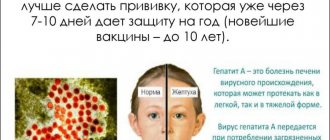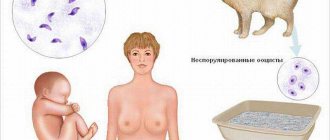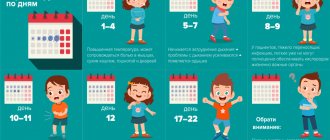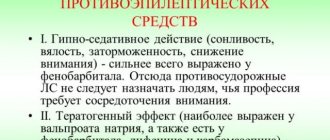The human body has special thermoregulation mechanisms. They help maintain a stable body temperature. However, under the influence of various unfavorable factors, thermoregulatory function may be disrupted. A fatal body temperature for a person is considered to be the temperature at which the body can no longer function. What could cause this condition? And at what thermometer readings should you sound the alarm? We will consider these questions in the article.
Types of body temperature
The human body temperature changes under the influence of external and internal factors . Death occurs in situations where the body loses the physiological ability to cool or warm tissues.
There are the following types of human body temperature:
- reduced - less than 35 degrees Celsius;
- normal - temperature ranges from 35 to 37 degrees;
- subfebrile - body temperature remains in the range of 37 to 38 degrees;
- febrile - elevated temperature with fever from 38 to 39 degrees;
- pyretic - expressed in the serious condition of the patient, as well as temperature indicators from 39 to 41 degrees;
- hyperpyretic - there is a real threat to a person’s life, since in this case his body temperature exceeds 41 degrees.
Each type of temperature has a direct impact on the functions of internal organs, metabolic processes and the general well-being of a person. An increase in the body's heat metabolism requires taking medications with antipyretic properties.
For patients with critically low body temperature, emergency resuscitation measures are carried out aimed at stabilizing the functions of internal organs, as well as warming the body.
Natural reaction of the body
When a disease occurs, the human body raises its own temperature to resist foreign invaders. This can happen either within 24 hours or quickly - in just 30-60 minutes. The faster the temperature rises, the more acutely it is perceived by the patient himself. He may experience chills, headaches, muscle pain, and sometimes a real fever.
No matter how unpleasant the sensations may seem, you should not immediately grab fever-reducing medications. It is necessary to understand that the body has entered into a fight against the disease, with the greatest degree of probability it will win in the next day or two, and the only thing that is required of the patient is not to interfere in this battle, but to endure the troubles that befall him.
Normal body temperature in humans by age
The table below shows normal body temperatures for people of different age groups:
| Person's age | Normal body temperature (indicator °C) |
| Newborn baby | 36,8 |
| Baby 6 months | 37,4 |
| Child aged 1 year | 37,4 |
| Children 3 years old | 37,4 |
| Child 6 years old | 37,0 |
| Men, women up to 65 years old | 36,8 |
| People over 65 years old | 36,3 |
These temperature indicators are normal for the armpit area. During the examination of a person, not only his age is taken into account, but also the possible presence of concomitant diseases, individual characteristics of the body, and type of professional activity.
Temperature fluctuations in different forms of Covid
In young people, a mild form of Sars-CoV-2 occurs with a short-term fever that lasts no more than two days. So-called “temperature crises” are also possible - sharp rises in temperature to 40° and above. Such outbreaks do not last long, although they are quite difficult to tolerate. The temperature easily drops and drops after a few hours.
The described thermal surges can accompany the coronavirus for 1-2 weeks.
If we talk about the classic temperature picture, it looks like this:
- t rises mainly in the evening and can reach peak values of 38-39°;
- antipyretic drugs help and relieve fever for a while;
- in the morning, t, as a rule, does not rise above 38°;
- with temperature fluctuations today, for example, the thermometer shows a maximum of 37.1° all day, and the next day – already 39°.
With a mild form of Covid, which is accompanied by mild symptoms, t is consistently at 37-37.3°. In older people, due to age-related characteristics of immunity, coronavirus often occurs at normal temperatures. Postmenopausal women also rarely have a fever.
The asymptomatic form of Covid-19 is also characterized by a slight increase in t to 37°. But first you need to take a nasopharyngeal swab and make sure that it really is Covid. The temperature tail is characterized by changes in t during the day: for example, during the day it rises to 37° and above, and in the evening it drops below 36.5°.
Body temperature that is fatal to humans
The lethal temperature for a person can be too high or very low . In both cases, metabolic processes are disrupted and the functionality of internal organs is reduced or completely lost.
In conditions of severe hypothermia of the body, biological death occurs if the temperature drops below 28°. In this situation, numbness occurs in all tissues involved in the implementation of the functions of the musculoskeletal system. Then the heart and breathing completely stop.
Overheating is no less dangerous for the body, as it can lead to death. Under conditions of hyperthermia, a pathological spasm of blood vessels occurs, which is fraught with disruption of general circulation and cardiac arrest. Death can occur if a person's body temperature is above 41°.
The degree of lethality is influenced not only by the factor of disturbance of the body's heat metabolism, but also by the main reasons that provoked the fever and febrile state of a person. Age and the level of functional activity of the heart, kidneys, and blood vessels are of great importance.
Causes and signs of hypothermia
A fatal temperature for a person causes the failure of all life support systems of the body . The process can be gradual or instantaneous. It all depends on what external factors affect the body. The main cause of hypothermia is severe hypothermia.
Violation of heat exchange in the direction of decreasing temperature indicators can be caused by the following factors:
- falling into cold water;
- prolonged exposure to frost;
- exposure to chemicals whose properties are associated with the implementation of the freezing effect (for example, liquid nitrogen);
- prolonged hypothermia of the body in damp and cold weather, when the body is not properly protected by warm clothing.
In cold conditions, the human body begins to give off a large amount of energy. Heat loss occurs through the skin and respiratory organs. Exposure to gusty winds accelerates the development of hypothermia.
The first signs of a decrease in body temperature are the appearance of a feeling of trembling and spasm of blood vessels. In this situation, the body signals that it is urgent to take measures aimed at warming the body. Otherwise, there will be a further increase in symptoms of hyperthermia.
The symptom of hypothermia in the form of trembling is a protective mechanism of the body. During trembling, involuntary contraction of muscle tissue occurs, which begins to produce additional amounts of thermal energy. Vasospasm makes it possible to slow down the flow of blood that goes towards the skin, lower and upper extremities.
This symptom of hypothermia is also another heat-saving mechanism. As body temperature further decreases, the effect of slowing down the functioning of the respiratory system and heart muscle develops. The main consumption of thermal energy is directed to maintaining full functions of the brain.
The following basic symptoms are identified that indicate the occurrence of hypothermia:
- trembling of the whole body;
- confusion of thoughts and unclear consciousness;
- slurred speech;
- problems with coordination of movements (first of all, the work of the upper extremities is disrupted);
- severe fatigue and feeling of exhaustion;
- drowsiness;
- memory losses.
An outward sign of hypothermia may be skin that is too red or pale. The human body becomes very cold. A drop in temperature to critical levels can cause symptoms of tissue rigor.
Chemical method
It is based on the relationship between the amount of heat generated in the body and the rate of exothermic reactions. The chemical type includes two ways of maintaining the desired temperature - contractile and non-contractile thermogenesis.
The contractile begins to act when you need to increase body temperature, for example, when staying in the cold. We notice this by the raising of hairs on the body or by running “goosebumps”, which are microvibrations. They allow you to increase heat production by up to 40%. When we freeze more severely, we begin to tremble. This is also nothing more than a method of thermoregulation, in which heat production increases by approximately 2.5 times. In addition to involuntary reflex reactions to cold, a person, by moving, can raise the temperature in his body. Violation of thermoregulation in this case occurs when exposure to cold is too long, or the ambient temperature is too low, as a result of which the activation of metabolic reactions does not help generate the required amount of heat. In medicine, this condition is called hypothermia.
Thermogenesis can be non-contractile, that is, it can occur without the participation of muscles. Metabolism slows down or accelerates under the influence of certain medications, with increased production of hormones in the thyroid gland and in the adrenal medulla, with more active activity of the sympathetic nervous system. The reasons for the violation of human thermoregulation in this case lie in diseases of the above-mentioned thyroid gland organs, the central nervous system, and dysfunction of the adrenal glands. Information about temperature changes always reaches the central nervous system. The heat center is located in a tiny part of the diencephalon, the hypothalamus. It consists of a front region, responsible for heat exchange, and a rear region, responsible for the production of heat products. Pathologies of the central nervous system or dysfunction of the hypothalamus disrupt the coordinated functioning of these parts, which negatively affects thermoregulation.
The intensity of heat exchange, and in addition, some vascular functions are influenced by the thyroid hormones T3 and T4. In a normal state, in order to conserve heat, the vessels narrow, and to reduce it, they expand. Californian scientists have proven that hormones can “interfere” with blood vessels, as a result of which they stop responding to the amount of heat generated and the body’s need for it. In medical practice, disturbances in thermoregulation are often observed in patients diagnosed with a brain tumor or thyrotoxic crisis.
Mechanism of development of hypothermia
The table below shows the main mechanism and stages of development of hyperthermia, which are characterized by the manifestation of certain signs of hypothermia:
| Severity of hypothermia | Body temperature indicator | The mechanism of development of critical hypothermia of the body and the corresponding symptoms of its manifestation |
| Lightweight | The human body temperature ranges from 32 to 35°. | At this stage of the onset of hypothermia, severe trembling of the hands appears, which gradually spreads to all other parts of the musculoskeletal system. Signs of goose bumps appear. Then the epithelial tissues acquire a bluish tint, which indicates a pronounced spasm of blood vessels and a slowdown in general blood circulation. After this, memory problems arise and symptoms of confusion appear. The person's speech becomes unintelligible. |
| Moderate | The human body temperature ranges from 28° to 32°. | At this stage, the mechanism of development of hypothermia is accompanied by the appearance of drowsiness and visual hallucinations. Such signs of a pathological condition indicate that the body has turned on a thermal energy saving mode even for brain tissue. A person experiences the effect of shaking feet, which prevents full movement of the lower extremities. |
| Strong | Body temperature readings are below 28°. | At this stage of hypothermia, the mechanism for the development of hyperthermia is expressed in the complete stop of heartbeat and breathing. Biological death occurs. |
Stages of development of a fatal body temperature for a person
A case was recorded when a person with signs of hypothermia, whose body temperature was 16°, was able to survive. Currently, this indicator is a record for preserving the functions of internal organs in conditions of critical hypothermia of their tissues.
Causes and symptoms of hyperthermia
A lethal temperature for humans causes disturbances in the functioning of the heart and blood vessels. Hyperthermia occurs due to maximum overstrain of the physiological mechanisms of the human body, which are involved in the process of thermoregulation.
If factors that contribute to an increase in body temperature are not eliminated, this leads to the development of heat stroke. This condition is very dangerous for people who have acquired diseases of the cardiovascular system.
There are symptoms of hyperthermia, indicating that a person needs to reduce body temperature:
- increased sweating;
- disturbance of the body's heat metabolism towards a progressive increase in temperature;
- change in the color tone of the skin, which can acquire a bright red, burgundy or bluish tint depending on the condition of the blood vessels and heart of a person;
- violation of local and general blood circulation;
- oxygen starvation of the brain;
- dehydration of the body;
- loss of mineral salts;
- imbalance of electrolytes, the level of which decreases in proportion to the process of dehydration;
- cardiopalmus;
- increased stimulation of the nervous system;
- spasms of the lower extremities and the whole body;
- physical weakness;
- confusion;
- feeling of heat;
- visual and auditory hallucinations;
- loss of consciousness.
Timely measures taken to cool the body can limit mild symptoms of hyperthermia in the form of increased sweating, a feeling of heat, rapid heartbeat and physical weakness.
Heatstroke
Heatstroke is a consequence of overheating of the entire body.
This type of pathological condition of the body occurs in the following cases:
- the person is in hot weather or inside a stuffy room where dry and hot air predominates;
- the body has been exposed to solar radiation for a long period of time;
- Almost all areas of the skin are covered with warm clothing in dark shades when it is too hot outside or indoors.
Heatstroke has typical symptoms of hyperthermia. In this case, the appearance of additional symptoms in the form of nausea, vomiting, the appearance of dark circles and spots before the eyes cannot be ruled out.
After a person’s body temperature reaches 42°, the physiological processes of protein bond breakdown begin, which leads to inevitable death. The largest number of deaths caused by heatstroke are recorded annually in Russia, Japan, and Canada.
Sunstroke
The condition of hyperthermia caused by sunstroke, in its symptoms, resembles thermal overheating of the body. In this situation, brain function is impaired, which affects the performance of all internal organs and the musculoskeletal system.
At risk are people who stay in direct sunlight for a long time and do not wear hats during the hot season. The consequences of sunstroke are intensified if the environment is dominated by too humid air and there is no wind. This cause of hyperthermia can cause coma or death.
Diseases
Hyperthermia and a febrile state of the body, which is caused by an infectious or inflammatory disease, are much easier to tolerate than heat and sunstroke. In this situation, an increase in body temperature is not a disruption in the functioning of thermoregulatory mechanisms, but a protective reaction of the body in response to the invasion of pathogenic microbes.
In hot conditions, the process of cell division of infectious agents slows down significantly or completely stops, and then their complete death occurs. Hyperthermia caused by the inflammatory process is much less likely to lead to death.
Why does she stay
After the symptoms pass, low-grade fever may persist for some period, due to the body's ongoing fight against infection. This is a kind of residual phenomenon, it’s just that the return to the starting point occurs slowly.
A slight temperature of 37°, and up to 38°, is not a pathology, but a gradual stabilization of the temperature curve after defeating the disease. The functioning of organs and systems is improving, but this takes time, since the body is not always able to rebuild itself at once.
Coronavirus infection Sars-CoV-2 is unpredictable and causes a number of other consequences. Many people complain of hair loss, deterioration of nails and dry skin.
Particularly often, residual effects remain after pneumonia, since patients also receive radiation exposure due to tracking dynamics on a computed tomograph. Those who have had a mild form of coronavirus also recover differently - some recover quickly, while others remain weak for a long time. Decreased tone is observed for 1-4 weeks.
Development of hyperthermia
The development of hyperthermia occurs with simultaneous exposure to high environmental temperatures and factors that contribute to dysfunction of thermoregulatory mechanisms. For example, critical overheating of the body occurs in people performing heavy physical work in direct sunlight.
At the same time, labor activity is carried out in the summer, in hot and windless weather. The influence of an external source of thermal energy is aggravated by the active contraction of muscle tissue, which also helps to warm the body.
Violation of the body's thermal regulation with the further development of hyperthermia can occur in men and women who are intoxicated.
Tip 2: Osgood-Schlatter disease: symptoms, treatment, consequences
Osgood-Schlatter disease most often occurs in children and adolescents under 18 years of age. As a rule, the cause of this disease is intense physical activity.
Young people who are intensively involved in active sports: football, basketball, athletics, hockey and others are at risk of developing Osgood-Schlatter disease. This disease affects the front of the knee and leads to the destruction of the core of the bone. One of the clear signs of Osgood-Schlatter disease is a fairly large tumor in the knee area.
In most cases, the disease occurs on one leg, but sometimes it can occur on both lower extremities. With timely treatment, the symptoms of this disease may disappear once the child’s body has finished growing.
First aid
A lethal temperature for humans causes respiratory arrest and disrupts the functions of the central nervous system. To minimize the risk of death caused by hypothermia or critical overheating of the body, the victim must be provided with timely medical assistance.
The procedure aimed at stabilizing the functions of internal organs depends on the general condition of the person, the causal factors that provoked a violation of the thermal regime of the body.
At low temperature
People with signs of hypothermia require urgent hospitalization in a therapeutic department.
Before the ambulance arrives, it is necessary to perform actions aimed at warming the victim’s body:
- A person who has critical hypothermia should be moved to a room with warm air or any other shelter that protects from the effects of frost and cold wind.
- It is necessary to remove wet clothes from the surface of the victim’s body, and then cover him with a blanket or warm clothes, which will speed up the process of restoring normal temperature.
The main emphasis of all actions aimed at warming a person with signs of hypothermia is on insulating the neck, head, groin area and chest. These are the parts of the body through which the greatest amount of thermal energy is lost.
A person who is in clear consciousness must be given warm drinks. In such a situation, it is recommended to brew black tea or make a decoction of chamomile or thyme. To increase the functional activity of the tissues of the heart and brain, warm tea should be consumed together with honey, or 3-4 tablespoons of sugar should be added to the drink.
After the person is completely warmed up, it is necessary to inspect his body for possible damage and signs of frostbite.
The last consequence of hypothermia is a fairly common phenomenon, since as hypothermia of the body worsens, local blood circulation slows down in the tissues of the lower and upper extremities. Upon arrival of ambulance doctors, the victim is hospitalized in the hospital.
If a person is in an unconscious state, characterized by confusion, the presence of delusional ideas, then you should not attempt to warm him up with hot drinks.
At high temperature
First aid to a person who has signs of a critical increase in body temperature should be provided as quickly as possible . Otherwise, there is a real risk of disruption of the heart, blood vessels and brain.
The person who provides first aid must follow the following algorithm of actions:
- Call an ambulance, reporting exactly what symptoms of hyperthermia the patient has.
- Move the person to a cool room. If there are no buildings nearby, then you need to find a shaded place where there is no direct sunlight.
- The patient should be placed in a horizontal position, and a pillow or bolster made from personal belongings should be placed under his head.
- Then you should moisten a handkerchief or any other piece of clean cloth in cold water.
- Before the arrival of doctors, it is necessary to wipe the patient’s face, back of the head, neck and décolleté to speed up the process of cooling the body, as well as prevent a further increase in temperature.
- If possible, it is recommended to remove unnecessary items from the patient that help warm the body.
- The organs of the respiratory system must be provided with a flow of fresh air, as this will avoid disruption of metabolic processes in brain cells.
- You need to collect 200-300 g of ice in a plastic bag and then apply it to the back of the patient’s head.
The best therapeutic effect aimed at cooling the human body with signs of hyperthermia is achieved by dousing it with water at a temperature of 18° to 20°. To do this, the patient must be placed in the bathroom, giving him a cool shower.
What is caloric
Warm
– mechanical property of the material.
The hotter an object, the more energy its particles have while moving. Atoms of substances
in a hot solid state vibrate faster than atoms of the same, but cooled substances.
Whether a substance remains in a liquid or gaseous state depends on the temperature to which it is heated
.
Today, any schoolchild knows about this, but until the 19th century, scientists believed that heat itself was a substance - a weightless fluid
called
caloric
.
Scientists believed that this fluid evaporated from the warm material, thereby cooling it. It can flow from hot objects to cold ones
.
Many predictions based on this theory are actually correct. Despite misconceptions about heat, many truly correct conclusions and scientific discoveries
. The caloric theory was finally defeated at the end of the 190th century.
What not to do at high and low body temperatures in humans
When providing first aid to people with signs of hypothermia or overheating of the body, it is strictly forbidden to perform the following actions:
- rub the arms, legs and other parts of the body of a person who has signs of critical hypothermia (these actions will lead to damage to the smallest blood vessels that are in a spasmodic state);
- speed up the warming process with the help of alcoholic drinks;
- place a patient with signs of hypothermia in a hot bath (the process of warming the body should occur gradually);
- place a person who has hyperthermia, accompanied by nausea and periodic vomiting, on his back (a patient with these signs must be placed on his side so that the contents of his stomach do not enter the trachea);
- place the patient under an air conditioner with a very cold air flow;
- assist a person with hyperthermia by exposing them to direct sunlight.
Human temperature is one of the physiological markers of the functional state of the body.
The change in this indicator is influenced by the environmental microclimate conditions, the age of the individual, the performance of internal organs, as well as the presence of concomitant diseases. Normal body temperature ranges from 36° to 37° . A decrease or increase in these indicators causes a gradual disruption of metabolic processes in the body, the work of the heart and respiratory organs slows down, and the walls of blood vessels contract.
For a person to die, it is enough that his body temperature drops below 28°, or rises to a maximum of 42°. In the latter case, denaturation of protein compounds occurs.
The concept of thermoregulation
Conventionally, the human body can be imagined as a kind of core with a constant temperature, and a shell where it changes. Processes take place in the core, resulting in the release of heat. Heat exchange occurs through the shell between the external environment and the core. The source of heat is the food we consume every day. When food is processed, oxidation of fats, proteins, and carbons occurs, that is, metabolic reactions. During their occurrence, heat production is generated. The essence of thermoregulation is to maintain a balance between heat exchange and the formation of heat production. In other words, in order for the body temperature to remain within normal limits, the shell must transfer as much heat to the environment as it is formed in the core. A disturbance in the thermoregulation of the body is observed when there is an excessive consumption of heat production, or, conversely, much more of it is formed than the shell is capable of releasing into the environment.
This may happen due to:
— environmental conditions (too hot or too cold);
- increased physical activity;
- clothing that is not suitable for the weather;
- taking certain medications;
- drinking alcohol;
- presence of diseases (vegetative-vascular dystonia, brain tumor, diabetes insipidus, various syndromes of hypothalamic dysfunction, thyrotoxic crisis and others).
Thermoregulation is carried out in two ways:
1. Chemical.
2. Physical.
Let's take a closer look at them.











